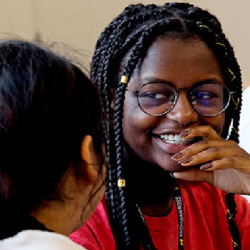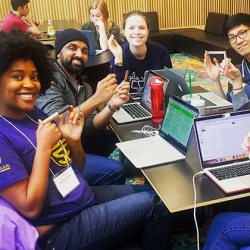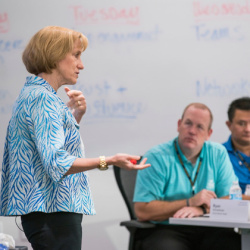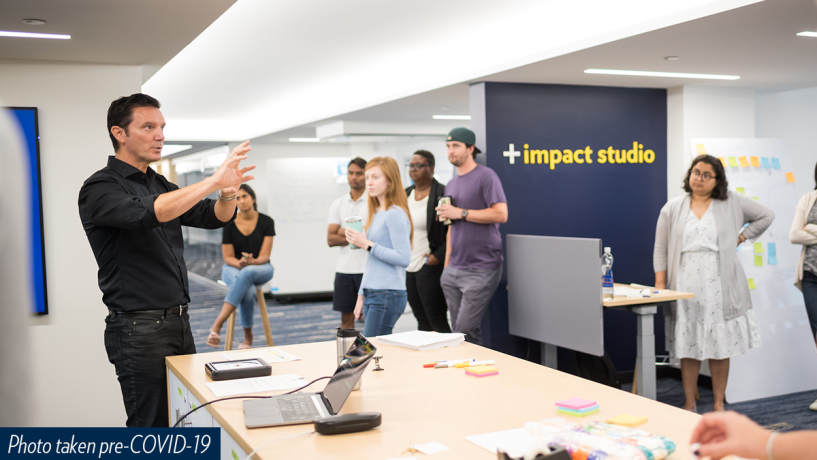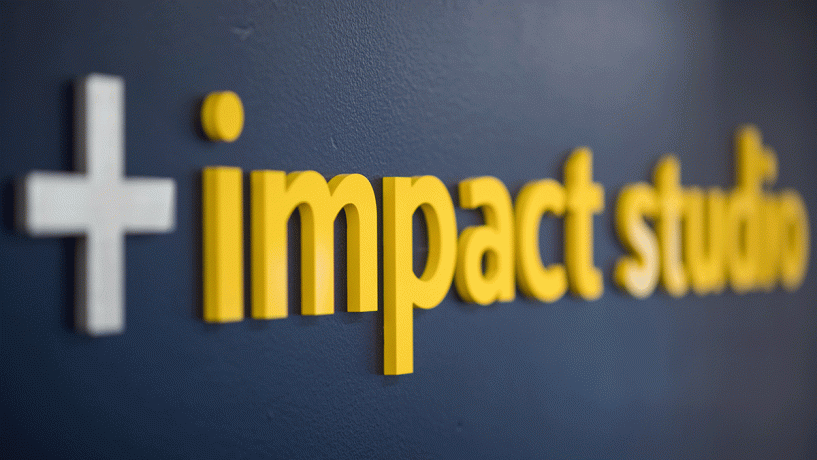An Alliance for Impact: Perspective from Michigan Ross Lecturer Kevin Thompson on GOOD Worldwide’s Merger with Net Impact
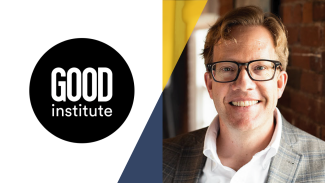
With more than 150 students from the Ross School of Business as members, the graduate and undergraduate chapters of Net Impact are highly popular clubs on campus.
Recently, Net Impact announced the nonprofit was combining forces with GOOD Worldwide to create a social impact alliance called the GOOD Institute, with the goal of scaling their impact initiatives, engaging the next generation of leaders, and serving as a force for good for leading businesses.
Beyond Ross student involvement in Net Impact, this new alliance has another direct connection to the Michigan Ross community. Ross lecturer Kevin Thompson is GOOD’s general manager, and he played a role in the partnership. Following the announcement, Thompson answered questions related to his role at GOOD, the new alliance with Net Impact, and his work at Michigan Ross.
What’s your role at GOOD?
I wear lots of hats and like it that way. I serve as the general manager, with profit and loss responsibility across our brands. I also lead finance, human resources, and with our CEO, run our growth strategy, including mergers and acquisitions.
Can you give a brief overview of GOOD and its current brands?
Sure. Our mission is to help people and organizations be a force for good, together. We serve “people who give a damn.” We’re a leader in social impact and sustainability, and a certified B Corporation.
GOOD started as a magazine in 2007 and grew as a publisher and media platform. In 2017, we acquired Upworthy, which focuses on bringing the best of humanity to the internet. Our distributed reach is about 100 million people per month. Our work in media gives us an influencer role in culture and ability to shape belief, which is an important way to achieve our mission. We place high value on engagement, a publisher’s mindset and storytelling with an emotional connection. That makes impact work more impactful.
We have a social impact consulting business. We help our clients with sustainability strategy, financial ROI of social impact work, and building purpose programs. We have a science brand called Leaps.org, which is an editorially independent media platform focused on the bioethics of scientific innovation. We work with iconic brands, philanthropic foundations, nonprofits, and the public sector.
How did the partnership, and ultimately the merger, with Net Impact come about? Is this a merger or something different?
It’s hard to land on the right words for this. We’re so excited. I was in Net Impact when I was an MBA student two decades ago and have long been a fan, supporter, and speaker at their various events. One of our company’s first public events was with Net Impact. Our clients are increasingly asking for more offerings, solutions, and programs in one place, with one provider.
We have a belief that the impact market is going to consolidate. It should… No one has double digit market share in anything. So with consolidation in mind, we’ve been looking at organizations with aligned missions to deepen relationships with. Net Impact inspires, equips, and activates emerging leaders to build a more just and sustainable world, with 160,000 members in over 400 chapters in 40+ countries. We love their engagement with Gen Z and membership model. They also do really interesting program work pairing students with corporations through challenge accelerators and case study competitions. We all believe there’s huge potential to do more.
We began talking about bringing our organizations together in the summer of 2020. Our missions are aligned. Our strengths are complementary. Together, we get scale that neither organization can achieve on its own. It took us about a year to put the right structure and organization in place. We formed the GOOD Institute, a nonprofit which Net Impact is now a program of, and the leadership of Net Impact have moved into leadership roles at the GOOD Institute.
What is the shared vision for this next step for GOOD and Net Impact? What do you hope to achieve together?
Be a force for good, together. That’s both simple and complex. We believe in the positive role business can and needs to play in the world. And the force that will keep moving us all forward is next generation leaders working in business. Beyond Net Impact, our shared vision for the GOOD Institute is to become a home for aligned mission nonprofit organizations working in business, media and science.
How will GOOD Institute operate?
The GOOD Institute is an independent, 501(c)3 nonprofit organization. We have an incredible board of directors with representation from leading impact investors, entrepreneurs, corporate executives, and academia. The relationship between GOOD Worldwide and the GOOD Institute is framed as a social impact alliance.
Did you consider alternative structures, such as running Net Impact as another for-profit business line, or was it clear from the start that this would require an innovation in your structure?
Net Impact is nearing its 30-year anniversary. That’s a long time. Many businesses don’t make it that long. They could have continued as they are, but we all agreed that to meet the moment, in the market today, we needed more ways to bring partners and people together. Nonprofits also serve as trusted conveners.
The conversion of a nonprofit to a for-profit can happen, and is happening in places today. We all felt that Net Impact should continue as a nonprofit.
Based on your experience, when and how should nonprofit organizations approach partnerships and M&A, both within the sector and with for-profit organizations?
Nonprofit mergers have moved from near nonexistent to rare. That’s progress, but there’s much more ground to cover. Partnerships between nonprofits and for-profits are common, and going beyond just a funding relationship to deeper commitments to programs and solving systemic challenges. Innovations in policy are allowing for different types of capital to flow into nonprofits, which provides new opportunities. I think this will be an exciting area of social impact.
Tell us about your work at Ross – How can students get involved, and what courses do you teach?
For starters, I love having a connection to students and business education. I don’t think businesses being a force for good happens without transformations of business schools, and Michigan Ross has been and continues to be a leader.
I’ve been around Michigan Ross for nearly a decade as a guest and became an executive-in-residence with Ross Executive Education and then lecturer three years ago. I developed a new self leadership course for undergraduates called InterMission (M&O 330). The purpose and intention is to help students adrift in a sea of expectations, who are exceptional at fulfilling goals set by others, but find themselves too busy to reflect on whether they’re the right thing to do. InterMission also has an important wilderness expedition component, which is an action-learning opportunity to apply leading self and leading others. Leadership takes practice. The course is taught in winter term. InterMission is also a qualified elective with the Erb Institute and Erb Fellows as well as the entrepreneurship minor.
